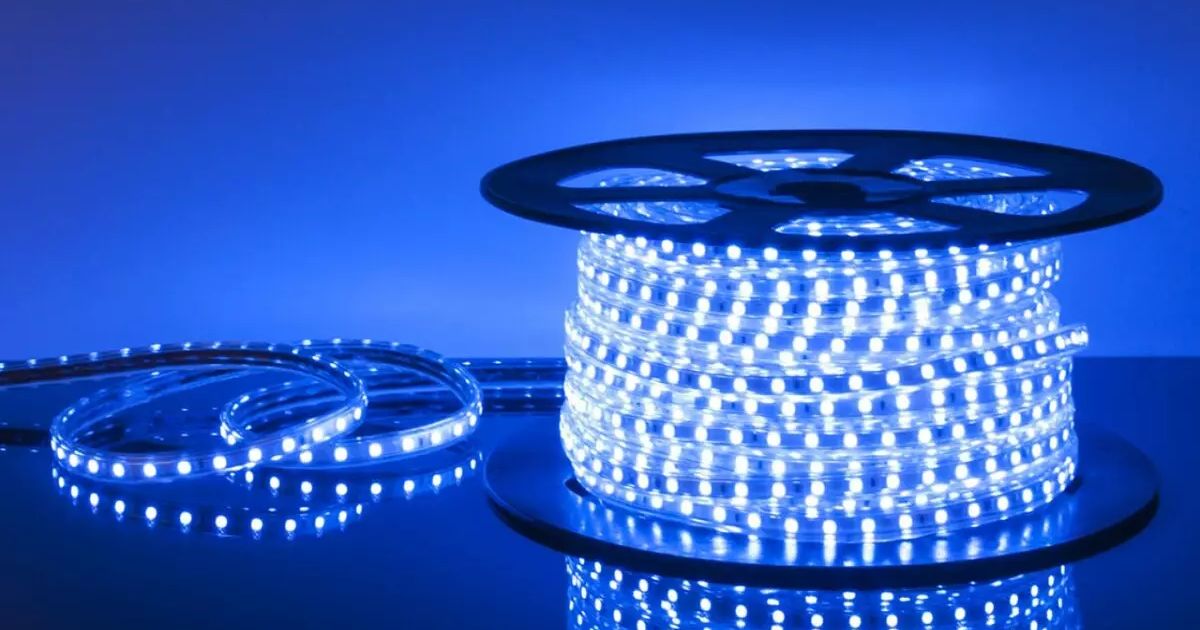The fuse to use for 12V LED lights is typically a low amperage fuse. This is because LED lights draw less current than traditional incandescent lights. Always refer to the LED light manufacturer’s recommendations or consult with a professional to ensure you’re using the correct fuse.
Imagine you’re setting up a cozy and inviting ambiance in your camper with 12V LED lights. You’ve carefully selected the lights, run the wiring, and now you’re at the final step installing the fuse. This small but crucial component protects your lighting system and your vehicle’s electrical system from potential damage due to overcurrent.
In essence, the exact amperage of the fuse you’ll need depends on the total wattage of your LED lights and the voltage of your system. It’s essential to consider safety factors, especially when dealing with electrical components like LED Strip Lights A Fire Hazard. You can calculate the appropriate fuse amperage using Ohm’s Law, where Current (Amps) = Power (Watts) / Voltage (Volts).
The Significance of the Right Fuse
Selecting the appropriate fuse for your 12v LED lights is not merely an act of compliance; it’s a critical step in safeguarding your investment, ensuring safety, and enhancing the performance of your LED lighting system.
Overcurrent Protection
Fuses play a pivotal role in ensuring overcurrent protection, which is a cornerstone of electrical safety. When an electrical circuit experiences an overcurrent, it’s a sign that something has gone awry..
Fuses are meticulously designed to respond swiftly to overcurrent situations. When the current passing through the circuit exceeds the fuse’s rated amperage, it triggers the fuse to break the circuit. This abrupt interruption serves as a vital safety mechanism, preventing the excessive current from reaching your 12v LED lights.
Preventing LED Burnout
The longevity and optimal performance of your 12v LED lights hinge on the appropriate selection of a fuse. LED lights, while energy-efficient and long-lasting, are not immune to the consequences of excessive current. When exposed to currents beyond their rated limits, LED lights can overheat, potentially leading to burnout or diminished performance..
Choosing the right fuse ensures that the current supplied to your LED lights remains within the limits specified by the manufacturer. By preventing excessive current from reaching the lights, you not only avert potential burnout but also extend the lifespan of the LEDs.
How to Choose the Correct Fuse

Selecting the right fuse for your 12v LED lights is a precise process that involves several key considerations. Here’s a step-by-step guide to help you make an informed decision:
Determine the LED Load
The first and foremost step in choosing the correct fuse is to determine the load that your LED lights will impose on the electrical circuit. This requires calculating the total current required for all your LED lights when they are operating simultaneously. To do this:
- Identify the Current Ratings: Check the current ratings of each LED light or lighting fixture in your system. This information is typically specified by the manufacturer and is measured in amperes (A).
- Sum the Current Ratings: Add up the current ratings of all the LED lights that will be connected to the same circuit. This total current represents the load that the fuse needs to handle.
It’s essential to be thorough in this calculation as it forms the foundation for selecting the appropriate amperage rating for your fuse.
Consider Inrush Current
LED lights, particularly when first powered on, may exhibit inrush currents that are temporarily higher than their continuous operating current. This surge in current occurs due to the initial charging of capacitors and other components within the LED driver circuit.
- Consult Manufacturer Data: Refer to the manufacturer’s specifications for your LED lights to determine the magnitude and duration of the inrush current. This data will guide you in selecting a fuse that can accommodate these momentary surges without tripping.
- Factor in Safety Margin: To ensure reliability, consider adding a safety margin when choosing the fuse. Select a fuse with an amperage rating slightly higher than the calculated load to provide additional protection against inrush current without compromising safety.
Choose the Correct Amperage
With the LED load and inrush current considerations in mind, it’s time to select the right amperage rating for your fuse. The amperage rating should match the total load of your LED lights while accounting for inrush current and any safety margin you’ve added.
- Match the Load: Choose a fuse with an amperage rating that matches the calculated load while considering the inrush current. This ensures that the fuse can carry the normal load without blowing prematurely.
- Safety Margin: If you’ve included a safety margin, the fuse’s amperage rating should be slightly higher than the load to provide that additional protection.
Fuse Type
Fuses come in various types designed for specific applications. For 12v LED lights, fast-acting fuses are most suitable. These fuses respond quickly to overcurrent conditions, making them ideal for protecting electronic devices like LED lights.
- Select Fast-Acting Fuses: When shopping for fuses, look for those labeled as “fast-acting” or “quick-blow.” These fuses provide effective protection by interrupting the circuit swiftly when an overcurrent situation occurs.
Check Voltage Rating
In addition to amperage, it’s essential to ensure that the selected fuse has a voltage rating that matches or exceeds the operating voltage of your 12v LED lights. Using a fuse with the correct voltage rating is crucial for safe and reliable operation.
- Match Voltage Ratings: Check the voltage rating on the fuse to ensure it is compatible with your 12v LED lighting system. Using a fuse with an inadequate voltage rating can compromise safety and functionality.
By following these steps and considering these factors, you can confidently choose the correct fuse for your 12v LED lights, ensuring their safety and optimal performance.
| Key Points | Description |
| Determine the LED Load | Calculate the total current required for your LED lights, considering the current ratings of each light in the circuit. This forms the foundation for selecting the right amperage rating for the fuse. |
| Consider Inrush Current | Take into account the inrush current that may occur when the LED lights are powered on. Consult the manufacturer’s data to determine the magnitude of inrush current and factor in a safety margin. |
| Choose the Correct Amperage | Select a fuse with an amperage rating that matches the total load of your LED lights while considering inrush current and safety margin. This ensures the fuse can handle the load without blowing prematurely. |
| Fuse Type | Opt for fast-acting fuses, labeled as “fast-acting” or “quick-blow,” which respond swiftly to overcurrent conditions and are ideal for protecting 12v LED lights. |
| Check Voltage Rating | Verify that the selected fuse has a voltage rating that matches or exceeds the operating voltage of your 12v LED lights. Using the correct voltage-rated fuse is crucial for safe and reliable operation. |
Types of Fuses for LED Lights
Blade Fuses
- Blade fuses, also known as spade fuses, are commonly used in automotive and marine applications. They come in various amperage ratings, making them suitable for a wide range of LED lighting setups.
ATC Fuses
- ATC fuses are standard-sized blade fuses often used in vehicles and small electronics. They are available in different amperage ratings and are readily available.
ATO Fuses
- ATO fuses are identical in size to ATC fuses but have different characteristics. They are also suitable for LED lighting and are easy to find.
Mini Blade Fuses
- Mini blade fuses are smaller than standard blade fuses and are commonly used in compact electronic devices and smaller LED setups.
here’s a summarized table that highlights the key points and descriptions from the article on “How to Choose the Correct Fuse for 12v LED Lights”:
By following these key points, you can confidently choose the correct fuse for your 12v LED lights, ensuring their safety and optimal performance.
FAQs
Do I need a fuse for 12V LED lights?
Yes, it’s a good practice to use a fuse with 12V LED lights for safety and protection.
How do I know what size fuse to use for 12V?
To determine the appropriate fuse size for 12V LED lights, you should check the LED’s current (in amps) and select a fuse slightly higher than that value.
How many amps does a 12V LED use?
The amperage of a 12V LED can vary, but it is typically in the range of 0.02 to 0.04 amps (20 to 40 milliamps).
What rating fuse for LED?
The fuse rating for LEDs depends on the LED’s current draw. Select a fuse with a rating slightly higher than the LED’s current in amps.
Do LEDs need bigger fuses?
No, LEDs typically have low current draw, so they don’t require bigger fuses. Choose a fuse rating that matches or slightly exceeds the LED’s current for proper protection.
Conculsion
Understanding how to select the appropriate fuse for your 12V LED lights is crucial in ensuring both the safety of your electrical system and the optimal performance of your lighting.
By considering the LED’s current draw and choosing the right fuse to use for 12V LED lights, with a rating slightly higher, you can safeguard your circuit from overcurrent and potential damage. The efficiency and longevity of your 12V LED lights are closely tied to the proper choice of fuse, ensuring that they continue to provide reliable illumination.













